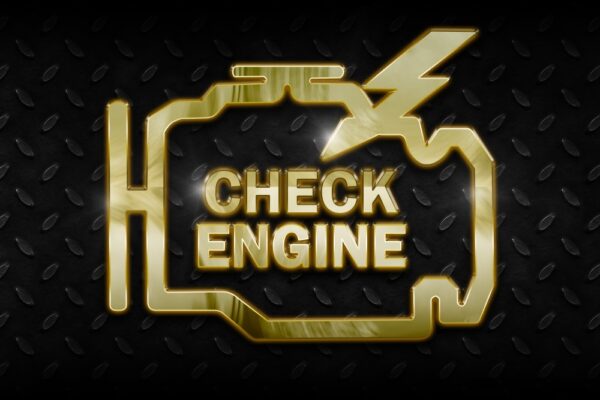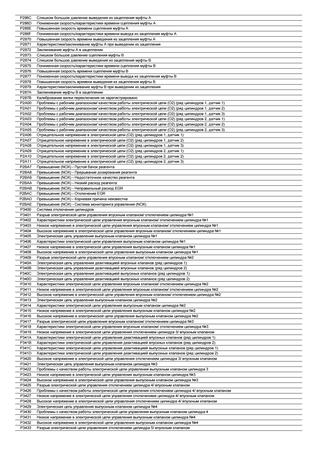
P2056 Reductant Injection Valve Circuit / Open, Bank 2, Bank 2
Content
- P2056 Reductant Injection Valve Circuit / Open, Bank 2, Bank 2
- OBD-II DTC Datasheet
- What does this mean?
- What is the severity of this DTC?
- What are some of the symptoms of the code?
- What are some of the common causes for the code?
- What are some steps to troubleshoot the P2056?
- Related DTC discussions
- Need more help with the P2056 code?
P2056 Reductant Injection Valve Circuit / Open, Bank 2, Bank 2
OBD-II DTC Datasheet
Reductant Injection Valve Circuit / Open Block 2, Bank 2
What does this mean?
This Diagnostic Trouble Code (DTC) is a generic transmission code and applies to many OBD-II vehicles (1996 and newer). This may include, but is not limited to, Ford, Mercedes Benz, Sprinter, Smart, Ram, etc. While generic, the exact repair steps may vary depending on the model year, make, model and transmission configuration.
A stored code P2056 means the powertrain control module (PCM) has not detected a voltage on the control circuit for the reductant injection valve for engine block two and selective catalyst recovery (SCR) system two. Bank 2 refers to an engine group that does NOT contain cylinder number one. Block 2 indicates that multiple reductant injection systems or SCR systems are being used.
The catalyst system is responsible for reducing (mostly) all exhaust emissions, although some applications are also equipped with a NOx trap.
Exhaust Gas Recirculation (EGR) systems take another step in reducing NOx emissions. However, today's larger, more powerful diesel engines cannot meet strict federal (US) emission standards with just an EGR system, a particulate filter / catalytic converter, and a NOx trap. For this reason, selective catalytic reduction (SCR) systems have been invented.
SCR systems inject a reductant formulation or Diesel Exhaust Fluid (DEF) into the exhaust gases upstream of the particulate filter, NOx trap and / or catalytic converter via a reductant injection valve (solenoid). The precisely calculated DEF injection raises the temperature of the filter element and allows it to work more efficiently. This extends the service life of the filter elements and helps reduce emissions of harmful exhaust gases into the atmosphere.
The entire SCR system is controlled and monitored by either the PCM or a stand-alone controller (which interacts with the PCM). In any case, the controller monitors the O2, NOx and exhaust gas temperature sensors (as well as other inputs) to determine the appropriate timing for the DEF (reductant) injection. Precision DEF injection is required to keep the exhaust gas temperature within acceptable parameters and to optimize the filtration of pollutants.
Reducing agent heaters are used to prevent diesel engine exhaust fluid from freezing at extreme temperatures. These heaters are usually located in the DEF reservoir and / or in the supply hose (s) of the reducing agent nozzle.
If the PCM detects a lack of voltage in the control circuit for the reductant injection valve for engine block two, block two, a P2056 code will be stored and the malfunction indicator lamp may illuminate.

What is the severity of this DTC?
A stored P2056 code should be treated as serious and should be dealt with as soon as possible. The SCR system could be disabled because of this. Catalyst damage can occur if the conditions that contributed to the code persistence are not corrected in a timely manner.
What are some of the symptoms of the code?
Symptoms of a P2056 trouble code may include:
- Reduced engine performance
- Excessive black smoke from vehicle exhaust
- Decreased fuel efficiency
- Other codes related to SCR
What are some of the common causes for the code?
Reasons for this code may include:
- Bad reductant injection valve
- Open or short circuit in the reducing agent injection valve control circuit
- Insufficient DEF in the tank
- Bad SCR / PCM controller or programming error
What are some steps to troubleshoot the P2056?
To diagnose the P2056 code, you will need access to a diagnostic scanner, digital volt / ohmmeter (DVOM), and vehicle-specific diagnostic information source.
If you can find a Technical Service Bulletin (TSB) corresponding to the year of manufacture, make and model of the vehicle; as well as engine displacement, stored code / codes and symptoms detected, it can provide useful diagnostic information.
You should begin your diagnosis by visually inspecting the harnesses and connectors of the reductant heater system. Burnt or damaged wiring and / or connectors must be repaired or replaced before proceeding.
Then connect the scanner to the vehicle diagnostic socket and retrieve all stored codes and corresponding freeze frame data. Make a note of this information before clearing codes and test driving the vehicle until the PCM enters ready mode or the code is reset.
The code is intermittent and can be much harder to diagnose (currently) if the PCM goes into ready mode. In this case, the conditions that contributed to the retention of the code may need to worsen before an accurate diagnosis can be made.
If the code resets, search your vehicle information source for diagnostic block diagrams, connector pinouts, connector face views, and component test procedures and specifications. You will need this information to complete the next step in your diagnosis.
Use the DVOM to check the power supply of the SCR control system. Check the fuses with a loaded circuit to avoid misdiagnosis. If the correct power (battery voltage) and ground circuits are found, use the scanner to activate the reductant injector valve (solenoid) and check the control circuit output voltage. If the voltage is insufficient, suspect the controller is defective or has a programming error.
If the voltage output circuit is within specifications, use the DVOM to test the reductant injection valve in question. If the valve does not meet manufacturer's specifications, it is suspected that it has failed.
- The reductant injection valve is actually a solenoid-based injector that sprays reducing fluid into the exhaust pipe.
Related DTC discussions
- There are currently no related topics in our forums. Post a new topic on the forum now.
Need more help with the P2056 code?
If you still need help with DTC P2056, post a question in the comments below this article.
NOTE. This information is provided for informational purposes only. It is not intended to be used as a repair recommendation and we are not responsible for any action you take on any vehicle. All information on this site is protected by copyright.
